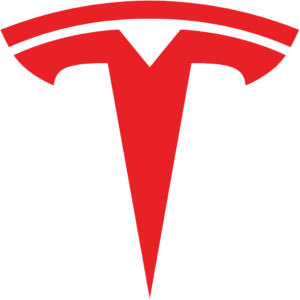How Desperation Stimulates Short-term Rational Thinking…. and Long-term Demise
NOTE: This blog was written in the first two weeks of April, 2020. As such, it cannot and does not anticipate the full effect of the COVID-19 pandemic on the US and global auto industry. Stay tuned…..
In this series of eleven blogs, we will discuss the current situation in Detroit with the traditional “Big 3” – Ford, GM, and Fiat Chrysler (FCAU) – and their upstart rival Tesla. The series will end with specific recommendations as to what the Big 3 must do to survive against Tesla and other electric vehicle manufacturers. The eleven blogs in this series are:
- The Detroit Big 3’s current woes, Part 1
- The Detroit Big 3’s current woes, Part 2
- A brief history of the Big 3’s electric vehicle attempts, Part 1, GM
- A brief history of the Big 3’s electric vehicle attempts, Part 2, Ford
- A brief history of the Big 3’s electric vehicle attempts, Part 3, FCAU and General Big 3 Summary
- What’s so special about Tesla — Part 1, financials and battery performance
- What’s so special about Tesla – Part 2, manufacturing, and cost/time reduction
- What’s so special about Tesla – Part 3, coming Tesla models, etc.
- What’s so special about Tesla – Part 4, Tesla versus emerging competitors
- Why Tesla so successful……..the Company; the Cars
- What’s a poor Big 3 auto company to do now?
A brief history of the Big 3’s electric vehicle attempts, Part 1, GM
Let’s briefly review how the Big 3 got to where they are today with respect to electric vehicles.
Ironically, electric cars such as the Detroit Edison were some of the first automobiles developed in the early 1900s. Women of the time favored them because they didn’t have to hand crank them to start them. Indeed, Henry Ford experimented with several prototypes and reportedly was planning to start producing them around 1915. In 1914, Ford’s good friend, Thomas Edison, said in an interview: “…….the electric automobile will be the family carriage of the future”. [OMG! 106 years early!] However, when Charles Kettering developed the electric starter, installed first on the 1911 Cadillac, it quickly spread throughout all ICE-powered vehicles (Model T: 1919) and obsoleted that particular women’s complaint about ICE-powered cars. Additionally, Edison and Ford got into a deal-ending dispute over which and whose batteries were to be used in Ford’s electric vehicle.
Recognizing the electric vehicle’s superiority and threat to conventional ICE-powered vehicles even then, during the period from about 1920 to 1950, the Detroit Big 3 and the oil US industry teamed up to successfully eliminate electric trolleys and busses in US cities.
General Motors:
- In 1996, under pressure from of a California Air Resources Board (CARB) mandate, GM released it’s “experimental” EV-1 all electric battery-powered vehicle, only under a lease program and initially only in Los Angeles, California, and Phoenix and Tucson in Arizona. These cars looked a bit unconventional, but the people who leased and drove them were very enthusiastic about them. This was despite their small (under 27 kWh) variety of batteries used at different times with resulting limited ranges of 55 to 142 miles, and a lack of any public charging infrastructure. But inside GM, corporate management “wisdom” prevailed and in 2002 the program was cancelled, and all of these EV-1s were reclaimed from their lessees and all but about 40 were destroyed. Those 40 all ended up in various museums across the US.
- In 2011, in belated response to Toyota’s Prius hybrid introduced in the US in 2001, GM came out with their Chevy Volt – an ICE-powered vehicle that also had a small battery in it that limited its electric driving range to 25 to 50 miles. The initial prototype, exhibited at the Detroit Auto Show in 2007, was a stunning beauty. But them GM went on to cheapen the car by building it based on its very ordinary looking existing Chevy Malibu’s styling and Delta platform.
- In 2013, GM introduced its Chevrolet Spark EV, their first all-electric vehicle since their EV1s. The Spark EV was a very small and narrow urban vehicle originally based on the Korean Daewoo Matiz. The Spark was produced and sold around the world in many ICE-powered configurations. The Spark EV had a 19 kWh battery in Chevrolet’s latest offering that delivered a range of about 82 miles. Chevrolet withdrew the poor selling Spark from the US market in December of 2016 in order to bring out its much more advanced Bolt.
- In 2016, GM came out with their Chevy Bolt, its third all-electric battery-powered vehicle in 20 years. [Kind of a slow pace for innovation, eh?] This was their best effort to date and for a small car in the US, the Bolt has been fairly well received in the marketplace. A “refreshed” slightly larger version of the Bolt with a greater range of 259 miles is scheduled for release in early 2021, having been delayed by half a year by the current virus shutdowns.
With the exception of the Bolt, GM’s efforts in the EV marketplace were rather lackluster and minimal – just enough to show the press and Wall Street that they were working on electric vehicles. None of their vehicles have generated the marketplace buzz and acceptance that Tesla’s vehicles have.
- As mentioned earlier in this series, on March 4, 2020, GM held a widely covered “EV” press day with its CEO Mary Barra and members of her senior executive team plugging GM’s ongoing $20 Billion investment in electric vehicles and battery technology. It did not escape industry followers’ attention that GM scheduled this event about six weeks before Tesla’s forthcoming “Battery Technology Day” as they wanted to show some progress on the EV front before Tesla captured more dramatic headlines.
During this conference, GM announced 20 new electric vehicle models spanning their entire range of vehicles from the Bolt to the Hummer and from their Cadillacs to their highly profitable SUVs and pickup trucks. These models were all promised to be available in GM dealers’ showrooms by 2023. They were all designed under the banner of GM’s new “multi-brand multi-EV strategy”. GM’s “Ultium” batteries, supplied in a joint production arrangement with LG Chem, are of the pouch style and are available in sizes from 50 to 200 kWh, thus providing a range of up to 400 miles at the high end. Well…..maybe. LG Chem can’t produce enough batteries to satisfy its customers’ demand now. We’ll see how their joint venture arrangement with GM goes.
GM announced that its new electric vehicle strategy would simplify their platforms to 19 varieties, compared with the 550 (!) ICE-powered combinations available today! Yikes! Any doubt as to why electric vehicles have an inherent cost advantage?
In early April, 2020, GM announced that they would be developing two electric vehicles with and for Honda that would be in Honda showrooms by 2024.
Clearly GM has a lot on its plate. While the press has avidly covered these recent GM announcements, saying “at last, Tesla will have some real competition”, it very much remains to be seen if this will be so.
- Blog #4 in this series is: A brief history of the Big 3’s electric vehicle attempts, Part 2, Ford and FCAU
Your feedback in the form of comments or suggestions are welcome in the comment window. Thank you for following my blogs and for participating in my blogging community.
Image Courtesy of Hemmings Motor News




